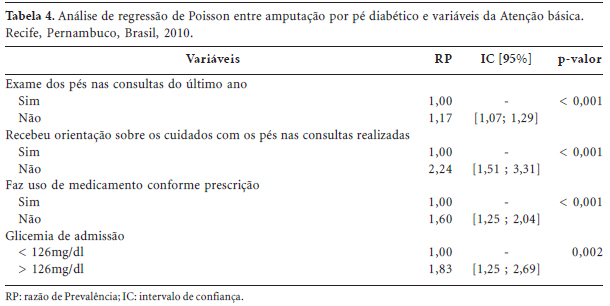The scope of this investigation was to establish the prevalence of diabetic foot amputations and analyze associations with factors related to the individual and to primary health care. It is a cross-sectional epidemiological study and the sample included 214 inpatients with diabetic feet in one of the four hospitals specialized in vascular surgery in the state of Pernambuco. Data were collected using semi-structured questionnaires. In the data analysis, chi-square association, Poisson regression (p < 0.05) and descriptive statistics procedures were applied. The prevalence of amputation ascertained was 50%. The following factors related to the individual were associated with its occurrence: low education (p = 0.027); two or more people living in the household (p = 0.046); and patient income below the minimum wage (p = 0.004). The following factors related to primary health care were associated with amputation: not having feet examined (PR = 1.17); not receiving guidance on foot care (PR = 2.24) in consultations in the past year; not using the drug for DM control as prescribed (PR = 1.60); and inadequate glycemic control (PR = 1.83). Understanding these factors helps to identify aspects of preventive care that require improvement.
Diabetic foot; Amputations; Primary health care




